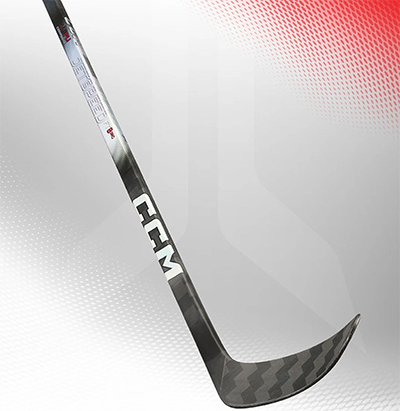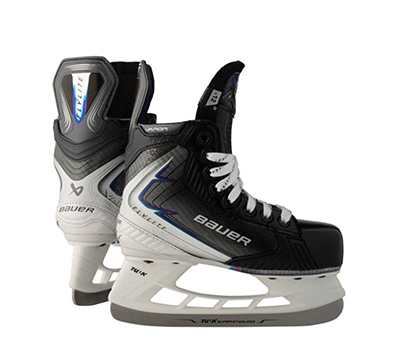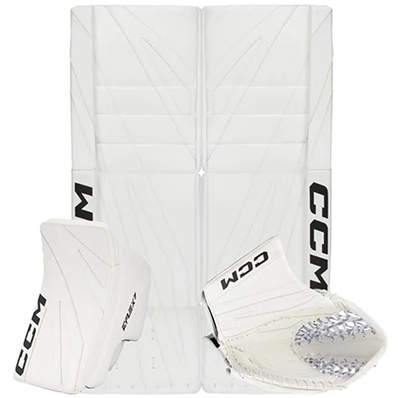In 2025, hockey is evolving faster than ever — not just in how the game is played, but also in how it’s geared.
From lightweight sticks and advanced pads to AI wearables and sustainable materials, this year’s innovations in the gear market are raising the bar for performance, safety, and environmental responsibility. Understanding hockey equipment trends 2025 is critical for players, coaches, parents, and manufacturers seeking a competitive edge in today’s game.
The Evolution of Hockey Equipment
From rugged starts to space-age innovation, the evolution of hockey gear mirrors the transformation of the sport itself. Hockey equipment in 2025 is the product of decades of innovation, designed to meet the demands of a faster, more physical, and highly technical game.
The shift isn’t just cosmetic; it’s changed how players perform, train, and stay safe on the ice. With pressure mounting to enhance safety, maximize speed, and embrace sustainability, equipment manufacturers are driving a renaissance in hockey gear — one that blends tradition with cutting-edge science. The evolution of gear also reflects broader changes in the ice hockey apparel market, where innovations in textiles and customization have transformed every product type, from jerseys to socks. A quick market overview reveals a clear trend toward lighter, form-fitting, and performance-enhancing designs.
How has hockey gear changed over the years?
Hockey gear has undergone a dramatic transformation from its humble beginnings. Where once players relied on rudimentary padding and heavy wooden sticks, today’s athletes benefit from ice hockey equipment made of carbon composites, memory foams, and smart textiles. These materials are engineered to optimize performance, protection, and comfort, all while reducing weight and increasing mobility.
The introduction of molded plastic helmets in the 1970s was just the beginning. By the 2000s, players began using hybrid shoulder pads and moisture-wicking base layers. Now in 2025, we’re seeing the arrival of embedded sensors, carbon-reinforced skate boots, and gear designed specifically for biometric feedback and energy return.
Even accessories like gloves and socks have become performance enhancers. Hockey gloves now feature anti-microbial linings and segmented padding for improved dexterity — a stark contrast to the one-size-fits-all leather models of the past.
Why Understanding Gear Evolution Matters
- Competitive Advantage: Lighter, stronger, and smarter gear enables athletes to push their limits and stay ahead of rivals.
- Injury Prevention: New materials and designs reduce impact forces and fatigue-related injuries.
- Technology Integration: From smart sensors to custom-fit options, innovation now plays a central role in training and game-day execution.
- Position-Specific Design: Today’s equipment is tailored to the needs of forwards, defensemen, and goalies, enhancing performance through specialization.
With the game becoming faster and more physical, equipment has adapted in kind, making it essential for athletes to understand these shifts and invest in the right gear. The evolution of hockey gear is all about enabling each player to reach their peak safely and efficiently.

Lighter Sticks and Skates for Faster Play
As the pace of the game accelerates, gear manufacturers are racing to keep up — and nothing has received more attention than reducing weight and increasing responsiveness.
Speed and agility have become defining attributes in modern hockey, and in 2025, that focus is reflected in the way ice hockey equipment is being engineered. Whether it’s gaining an extra step in open ice or shaving milliseconds off a shot release, the difference often comes down to the gear.
What new materials and designs are driving these changes?
In 2025, cutting-edge materials are fueling performance by making hockey sticks and hockey skates lighter, stiffer, and more responsive than ever before. These advances are being driven by both material science and biomechanics, as brands seek to create gear that adapts to player movement in real time.
Key Materials and Technologies
- Carbon Fiber: Now the gold standard, carbon fiber enhances shot power while drastically reducing stick weight.
- Composite Blades: Improved torsional stiffness leads to better puck feel and faster energy transfer.
- Thermoformable Skates: Players benefit from lightweight boots that mold to their feet, boosting comfort and agility.
Modern hockey stick construction leverages ultra-light carbon fiber and advanced taper geometries to deliver faster shot release. On the other end, ice hockey skate technology has evolved through brands like Bauer Hockey, which now offers thermoformable ice skates tailored to anatomical foot shapes, boosting both comfort and explosive power.
These market trends aren’t merely upgrades — they’re reshaping the way athletes interact with their equipment, enabling quicker transitions, sharper pivots, and a more explosive stride.
The Modern Gear Arsenal
Today’s player isn’t just choosing a stick; they’re building a customized arsenal of lightweight tools tailored to their playing style.
Modern gloves, too, have evolved. The newest models integrate stretch gussets, segmented cuffs, and moisture-wicking materials to complement a player’s dexterity and shot mechanics. When paired with lighter sticks and form-fitting skates, this trifecta of gear plays a pivotal role in elevating on-ice performance.
Performance Benefits
- Faster Acceleration: Lighter gear reduces drag, giving players a burst off the line.
- Improved Endurance: Less fatigue means more efficient shifts and better recovery during games.
- Greater Control: Advanced blade construction enhances responsiveness and puck control.
Manufacturers such as Bauer, TRUE, and CCM Hockey continue to push the envelope with stick flex profiles and skate chassis designed specifically for explosive movement. For example, Bauer’s Vapor HyperLite 2 series uses a low-kick point shaft and HyperCore blade to maximize shot quickness, while CCM’s JetSpeed FT6 Pro skate combines carbon composite with a one-piece boot design for seamless energy transfer.
These technological advancements are not only influencing player development but also shifting how coaches structure training, with drills that now emphasize quick-release mechanics, edge control, and fluid mobility.

Smarter Gear with Wearable Technology
As digital transformation continues to reshape sporting goods, hockey gear is becoming smarter, more connected, and more data-driven than ever before.
In 2025, wearable technology is no longer a novelty — it’s a staple of elite training programs, helping players at every level fine-tune their performance, reduce injuries, and respond more intelligently to the demands of the game. By integrating sensors, apps, and AI into the ice hockey equipment mix, manufacturers are redefining what it means to “suit up.”
How are smart wearables transforming hockey gear?
Ice hockey players and coaches are embracing smart technology to analyze real-time data on performance, biomechanics, and injury risk. The shift is driven by the growing demand for objective, quantifiable insights that were once difficult to access outside of pro-level analytics departments.
These systems now deliver feedback not just post-game, but moment to moment, giving players and staff unprecedented visibility into everything from fatigue levels to collision severity.
Key Technologies in Smart Hockey Equipment
- Embedded Sensors: Woven into shoulder pads, helmets, and jerseys to track heart rate, acceleration, and impact G-forces.
- AI-Powered Analytics: Apps provide insights on fatigue levels, skating speed, and shift efficiency.
- Connected Helmets: Record head impacts and relay data to medical staff for concussion protocol alerts.
Manufacturers are prioritizing these features in pro and youth gear alike, creating a new standard for ice hockey equipment that doubles as a safety net and performance coach.
Wearable tech now goes beyond fitness tracking; it’s a central tool for player development. From training camps to game-day shifts, these technologies allow coaches to see exactly how a player’s body is responding, and make informed decisions about rest, recovery, or adjustments. With wearable tech becoming standard across multiple sports equipment type categories, hockey is following suit. Forward-thinking key players in the consumer goods sector are expanding their R&D into gear that enhances biometric tracking and predictive performance modeling.
Benefits for Performance and Safety
- Injury Mitigation: Detects potentially dangerous collisions or overtraining patterns early.
- Coaching Insights: Allows for real-time adjustments to drills, lines, and strategy.
- Customization: AI recommendations for stick flex, pad adjustments, and skate alignment.
Brands like Catapult and STAT Sports are already partnering with major hockey programs to provide data-rich insights across elite, junior, and even youth leagues. Athletes are beginning to view smart gear as essential — not just for recovery and safety, but also for skill refinement and competitive edge.
As part of broader hockey equipment trends 2025, smart gear helps athletes optimize every moment on the ice. Ultimately, it supports individualized coaching strategies, better conditioning cycles, and proactive injury prevention.
Beyond the rink, this data also serves a role in recruitment and scouting. Coaches and scouts can now evaluate players based on hard metrics like top skating speed, reaction time, and impact absorption, offering a more complete picture of potential than traditional stats alone.
Eco-Friendly Materials and Sustainable Practices
Sustainability is no longer a buzzword in sports — it’s a mandate. As climate change and environmental responsibility continue to dominate headlines, the sports space is stepping up its efforts to minimize waste and reduce its carbon footprint.
In the hockey world, that shift is becoming especially visible in the way gear is produced, packaged, and marketed. From youth leagues to professional organizations, the demand for sustainable solutions is accelerating, and the ice hockey equipment market is meeting the moment.
How is sustainability becoming part of hockey gear?
As environmental awareness grows across all industries, the hockey equipment market is seeing a major push toward sustainable innovation.
Eco-conscious players and parents are demanding gear that performs well without harming the planet. This pressure has prompted manufacturers to revisit how their products are made, from the raw materials used to the lifecycle of the equipment itself.
Many are adopting closed-loop manufacturing processes that recycle excess materials and reduce energy consumption during production. In a sport where turnover in gear is frequent — especially for growing youth athletes — that shift toward eco-design is critical.
Sustainability Innovations
- Recycled Plastics: Used in helmet shells, shin guards, and skate holders.
- Bio-Based Foams: Derived from renewable resources, reducing petroleum dependence.
- Low-Impact Dyes and Packaging: Minimizing waste and chemical runoff.
These innovations not only meet eco standards but also maintain — and in some cases, improve — performance levels. For example, new-generation protective gear made with bio-foam can offer the same shock absorption and flexibility as traditional materials, while being lighter and more breathable.
Brands like Winnwell and Sherwood are leading the way. Winnwell’s CleanHockey™ line incorporates reclaimed materials and water-based adhesives, reducing carbon footprint while maintaining elite-level performance. Sherwood, meanwhile, has launched skates and gloves made from partially recycled inputs and biodegradable packaging; this is an industry first that resonates with the next generation of athletes.
Sustainability isn’t just a value-driven decision; it’s fueling market growth within the global market for eco-friendly hockey gear. Analysts project steady adoption across youth and amateur levels during the current forecast period, driven by rising awareness and product innovation.
Why Sustainability Matters
- Consumer Demand: Parents and players prefer environmentally responsible options.
- League Incentives: Some youth leagues offer recognition for teams using eco-friendly gear.
- Brand Differentiation: Retailers are responding to growing interest in sustainable products.
Organizations like USA Hockey are beginning to explore partnerships with sustainable brands, especially at the youth level, where education and awareness can have long-term influence. Beyond aesthetics, players and families want to support brands that align with their values — and this includes how gear is manufactured, shipped, and even disposed of.
With eco-friendly sports gear entering the mainstream, expect more brands to follow suit. Those that don’t risk falling behind as athletes, coaches, and retailers increasingly prioritize transparency, material traceability, and environmental performance.

Evolving Protective Gear for Better Safety
Safety is non-negotiable in today’s game, and the technology protecting players is evolving just as fast as the game itself. As hockey becomes quicker and more physical, the need for protective gear that can keep up with impact forces, rotational trauma, and prolonged wear is more critical than ever.
The top brands in 2025 are investing heavily in R&D to engineer gear that not only meets updated standards but actively reduces injury risk through smarter materials and ergonomics. The latest ice hockey protective gear is being designed to outperform traditional options and differentiate brands in a crowded competitive landscape, where safety and comfort are major buying factors.
What new features are being added to protective gear?
Safety remains a top priority in 2025. The latest protective gear incorporates science-backed materials and ergonomic design to offer better coverage, airflow, and impact absorption. These advances go far beyond superficial improvements; they’re based on the latest research in sports medicine, materials science, and real-time game data.
Modern gear must now strike a careful balance: it needs to protect against high-impact collisions without compromising a player’s mobility, flexibility, or visibility on the ice.
New Features in Protective Equipment
- Rotational Energy Dampening (RED): Found in helmets to counteract dangerous rotational forces.
- Perforated Foam Padding: Improves airflow while still protecting vulnerable areas.
- Moisture-Wicking Liners: Reduce bacterial growth and increase comfort.
Beyond those highlights, companies are also experimenting with smart impact textiles — fabrics that stiffen upon contact and then return to flexibility. This is particularly important for shoulders and knees, where repetitive contact is frequent and injuries are common.
Modern Options for Every Player
Whether you’re a forward crashing the net or a goalie absorbing slapshots, having the right protection can make or break your season.
Today’s gear comes in gender-specific and youth-specific designs, with adjustable fit zones and modular protection to ensure each athlete gets gear that performs at the highest level without compromise. Shop our full lineup of hockey player protective equipment and goalie equipment.
Brand Examples and Applications
Top brands are leading the innovation curve with gear that prioritizes both safety and playability:
- CCM Tacks XF Helmet: Includes D3O® smart foam that stiffens upon impact.
- Bauer Vapor Hyperlite Pads: Prioritize both mobility and protection with lightweight construction.
- Warrior Alpha Pro Gloves: Enhanced wrist mobility and impact coverage.
Each of these products exemplifies the modern approach to gear development, combining research-backed engineering with feedback from elite players.
As concussions and high-speed collisions continue to come under focus, advanced protection has become a core part of modern gear design. In fact, many professional and youth leagues now require compliance with updated safety certifications, including rotational impact resistance and shoulder pad coverage standards.
For players and parents alike, understanding the features behind new gear isn’t just about performance — it’s a critical component behind minimizing risk and ensuring long-term player wellness. Choosing the right helmet or elbow pad could be the difference between a successful season and time spent recovering from injury.
Staying Ahead of the Game
The future of hockey isn’t just about faster skating or better stickhandling. It’s about smarter decisions, safer gear, and sustainable progress. As technology, science, and environmental consciousness reshape how the game is played and supported, players and organizations who stay informed will maintain their edge.
From embedded sensors to eco-certified padding, today’s advancements are helping athletes move better, recover faster, and perform at their best. But staying competitive requires more than just buying new gear — it demands a willingness to test, learn, and evolve alongside the technology.
Hockey’s landscape is evolving rapidly; those who adapt will reap the benefits in performance, safety, and sustainability. Staying on top of these trends in the global hockey equipment market ensures that players, coaches, and parents can make smart decisions that improve outcomes both on and off the ice.
Understanding the latest market analysis and tapping into market insights can help athletes, coaches, and retailers identify what innovations are worth investing in — and which are likely to dominate the future of gear design.
Final Recommendations
- Test new technologies to find what enhances your performance and safety.
- Invest in quality gear that complies with modern standards and regulations.
- Consider sustainable options when purchasing new gear.
- Track industry updates to stay informed on innovation and compliance.
For every skater, goalie, coach, and manufacturer, now is the time to embrace innovation and prepare for the future of the game. Visit the Pro Stock Hockey blog for the latest insights, gear reviews, and expert tips.


